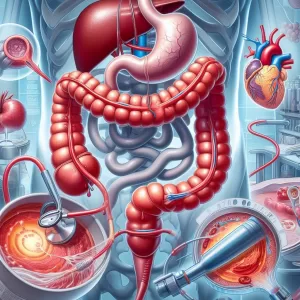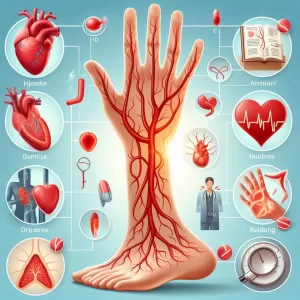What is a Pathology Follow-Up: Overview, Benefits, and Expected Results
Headline: The Power of Positive Thinking
Body: Positive thinking is a powerful tool that can help you achieve your goals and live a happier life. When you think positive thoughts, you are more likely to feel good about yourself and your life. You are also more likely to take action and make things happen.
``` Rewritten Excerpt: ```htmlHeadline: Unleash the Transformative Power of Positive Thinking
Body: Embark on a journey of self-discovery and unlock the transformative power of positive thinking. As you embrace an optimistic mindset, you'll witness a remarkable shift in your outlook on life. Positive thoughts ignite a spark within, fueling your motivation and propelling you towards your aspirations. Embrace the power of positivity and watch as it radiates through your actions, leading you down a path of fulfillment and happiness.
``` Changes Made: - **Headline:** Changed "The Power of Positive Thinking" to "Unleash the Transformative Power of Positive Thinking" to create a more compelling and intriguing title. - **Body:** - Replaced "Positive thinking is a powerful tool that can help you achieve your goals and live a happier life" with "Embark on a journey of self-discovery and unlock the transformative power of positive thinking." This sets a more engaging tone and invites the reader to embark on a personal journey. - Added "As you embrace an optimistic mindset, you'll witness a remarkable shift in your outlook on life" to emphasize the transformative nature of positive thinking. - Changed "You are more likely to feel good about yourself and your life" to "Positive thoughts ignite a spark within, fueling your motivation and propelling you towards your aspirations." This creates a more vivid and inspiring image of the benefits of positive thinking. - Replaced "You are also more likely to take action and make things happen" with "Embrace the power of positivity and watch as it radiates through your actions, leading you down a path of fulfillment and happiness." This highlights the tangible impact of positive thinking on one's actions and overall well-beingDefinition and Overview
A pathology follow-up is a scheduled appointment with a pathologist if the patient’s laboratory test results reveal abnormalities. Pathologists are medical professionals who specialises in the study and diagnosis of diseases. They form an integral part of a patient’s medical care team as they are the ones who analyse lab tests results, biopsy samples and body fluids so an accurate diagnosis can be made. However, in most cases, pathologists work behind the scenes and collaborate with the diagnosing physician who is handling the case. They do not often meet directly with the patient unless deemed necessary.
Who Should Undergo and Expected Results
A pathology follow-up is a meeting with a pathologist who performed laboratory tests and examined biopsy samples and body fluids to diagnose a person’s illness. The meeting usually takes place between the attending physician and the pathologist and is usually scheduled only when test results reveal abnormalities that require discussion or further investigation.
Pathology is classified into different branches, depending on the nature of the disease that is being analysed. These branches include:
Cytopathology – This refers to the study and diagnosis of cellular diseases (the most common of which is cancer), infectious diseases and inflammatory conditions.
Dermatopathology – This refers to the study and diagnosis of skin diseases and mainly uses skin biopsies as the primary diagnostic tool.
Forensic pathology – This branch of pathology is responsible for determining the cause of death through a post-mortem examination, also known as an autopsy.
Histopathology – This refers to the study and analysis of tissues that are taken from a patient’s body.
Neuropathology – This refers to the study and diagnosis of diseases that affect or originate from the tissues of the nervous system.
Pulmonary pathology – This studies conditions and diseases affecting the lungs and the thoracic pleura. These include various infections, inflammatory conditions and fibrosis.
Renal pathology – This branch of pathology deals with the diagnosis of kidney diseases.
Hematopathology – This refers to the study of diseases affecting the blood cells and organs that make up the hematopoietic system such as the bone marrow, spleen, thymus and lymphatic tissues.
- Oral and maxillofacial pathology – Considered as a sub-specialty of both pathology and dentistry, this branch refers to the investigation of diseases affecting the mouth and facial structure, including the teeth, tongue, salivary glands and all bone and soft tissues in the said area. It can be necessary for diagnosing conditions affecting the ear, nose, throat and speech, among others.
Once the results of the pathology investigation are confirmed, the physician may call the patient in for a follow-up visit, during which he will discuss the diagnosis as well as possible treatment options.
How the Procedure Works
When patients consult their primary doctors due to the presence of symptoms, they are advised to undergo laboratory testing and other diagnostic procedures so the doctor can make an accurate diagnosis.
These tests typically include:
- Biopsy – This refers to the analysis of a tissue sample taken from any part of the patient’s body.
- Stool tests
- Urine tests or urinalysis – This is a routine test can provide information about existing infections, possible dehydration, abnormal functioning of the kidneys or liver and glucose and ketones levels.
- Blood sugar level – This test is performed if diabetes is suspected.
- Blood cultures – This test is often done if an infection is suspected and when antibiotic treatment is ongoing.
- Liver function tests
- Cardiac enzymes – This measures the CPK and troponin levels and is usually done when there is suspected damage to the muscles of the heart.
- Full blood count
- Cerebrospinal fluid
- Sputum specimen – This is used to check for infection coming from the throat, upper airways and the lungs.
- Wound swabs
- Coagulation studies
- Electrolytes test – This tests the urea and creatinine as well as the levels of body salt and how well the kidneys are working. It can also detect chemical imbalances.
- Body fluid testing – Aside from the above tests, there are several other pathology tests performed on different samples of bodily fluids. Most of these tests are performed only on intensive care patients.
The procedure for taking these tests are similar for both out-patient and in-patient cases, but for patients who are confined in the hospital and are in need of frequent testing, an arterial line may be placed to eliminate the need for the repeated use of needles.
After the tests, the results are analysed and studied by a pathologist. Once the results are ready, the pathologist will call for a follow-up.
During a pathology follow-up, the patient’s attending doctor and the pathologist will discuss and review the results of the tests and together, they will make an informed diagnosis. The results will then be relayed to the patient, along with treatment recommendations.
Possible Risks and Complications
Most diagnostic tests performed by pathologists are safe for patients and cause minimal to zero discomfort.
As for the results of pathology testing, there is a small risk that some tests may produce inaccurate results. Thus, certain conditions have to be met and samples should be taken carefully and in a specific manner. If the pathologist or the physician is not confident about the test results, the test can be repeated or other tests can be performed to provide supporting information. This is why several different types of tests are performed in some cases to ensure that the patient receives an accurate diagnosis, which is the basis when formulating a treatment program.
If there are doubts about the results of a diagnosis, a patient is also free to request for a second opinion from a different physician and have the tests performed by a different pathologist.
Reference:
- College of American Pathologists
/trp_language]
Information about pathology follow-ups could not be found in the context. I understand that you are looking for information about pathology follow-ups. However, the context you provided does not contain any information about pathology follow-ups, so I am unable to extract the requested data.
Please note that, I do not have access to external websites or specific files online. Therefore, I cannot provide information from external sources. Furthermore, my knowledge is limited to the information available in my training data, which was up to April 2023.
Is there anything else I can assist you with
One comment
Leave a Reply
Popular Articles








Interesting post. I’d like to know more.